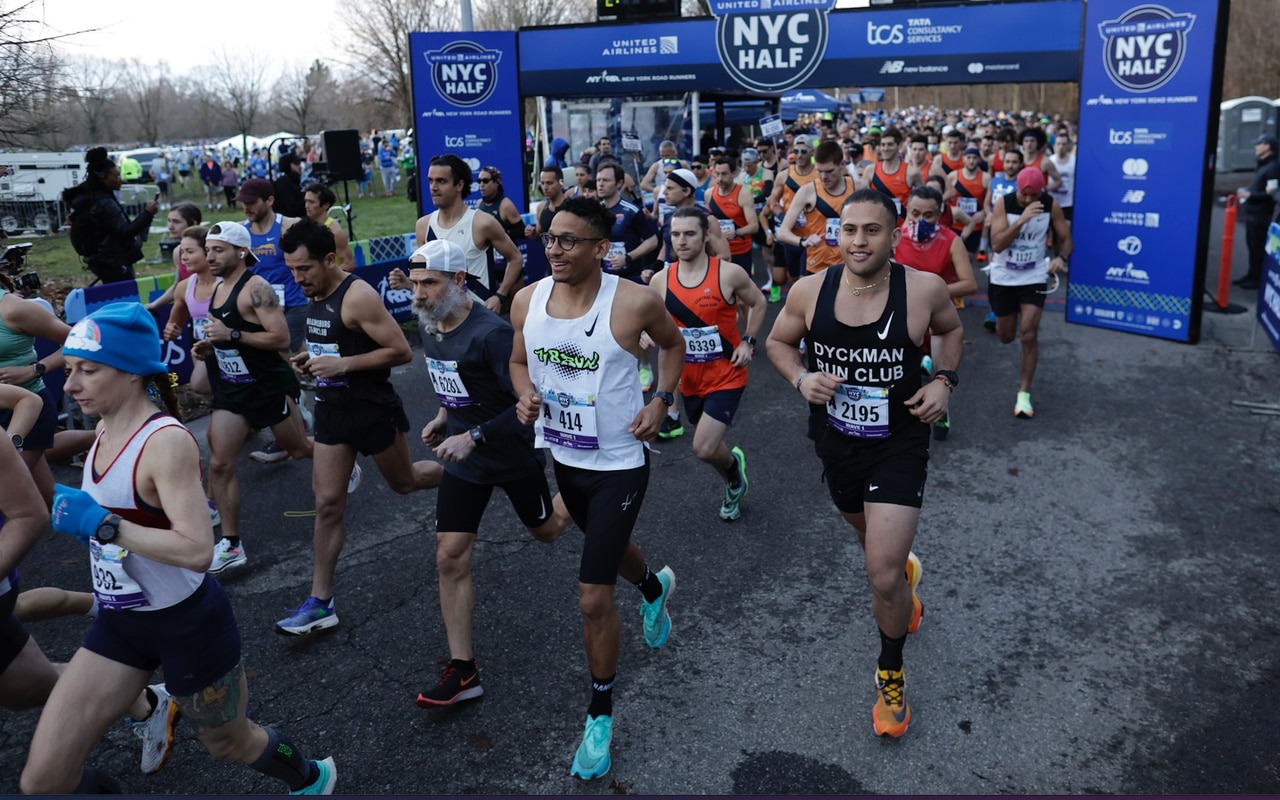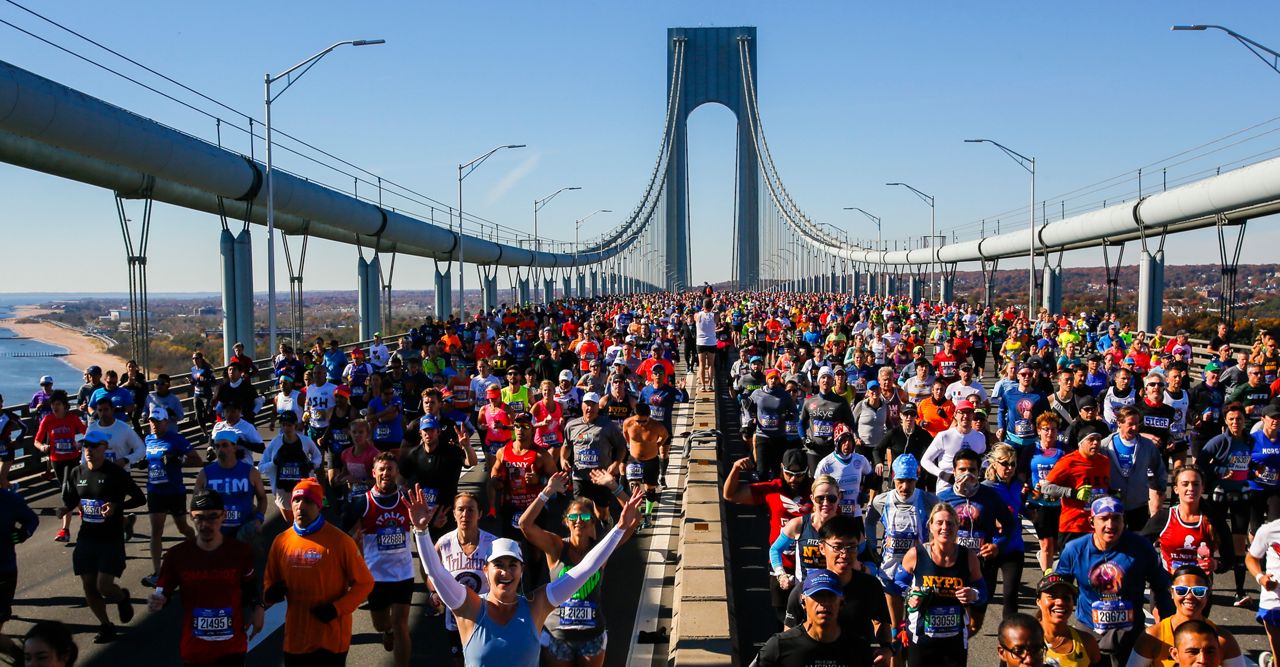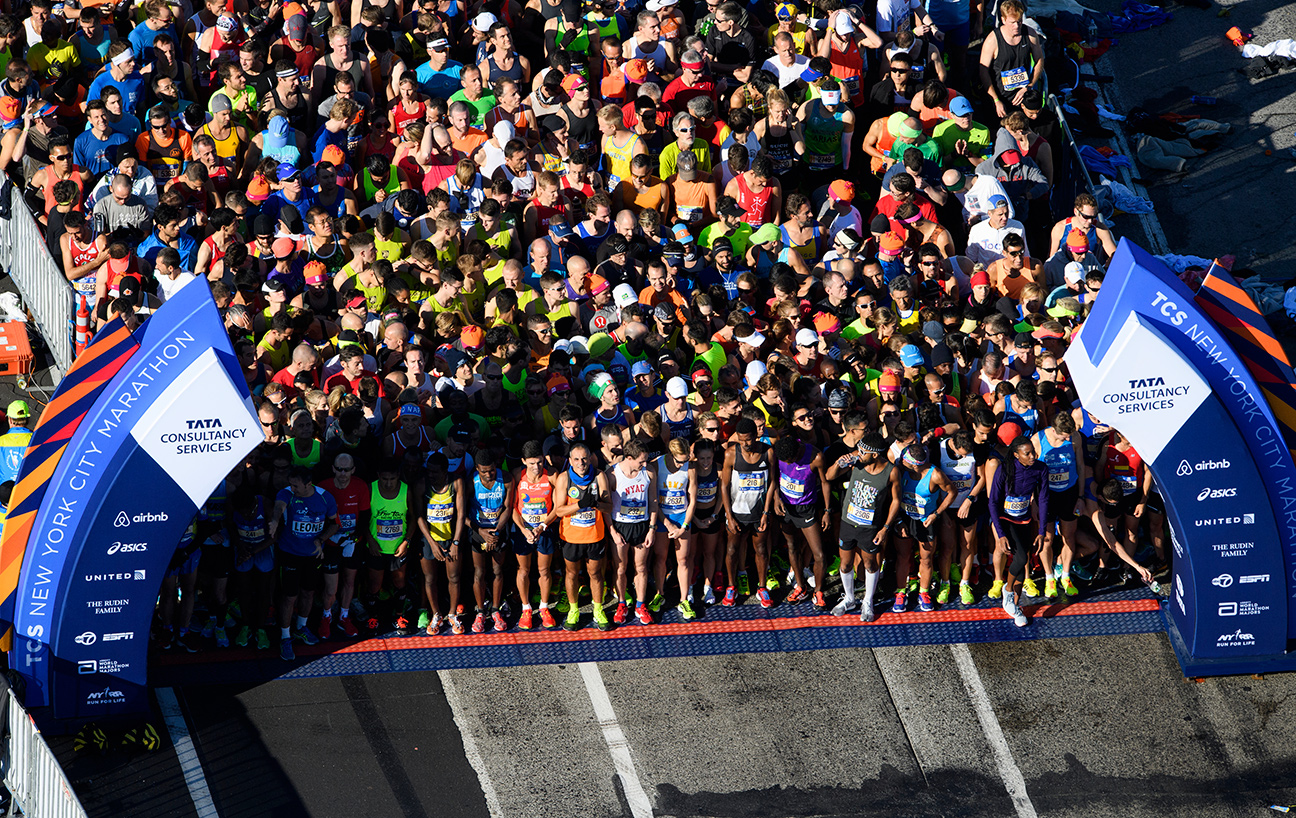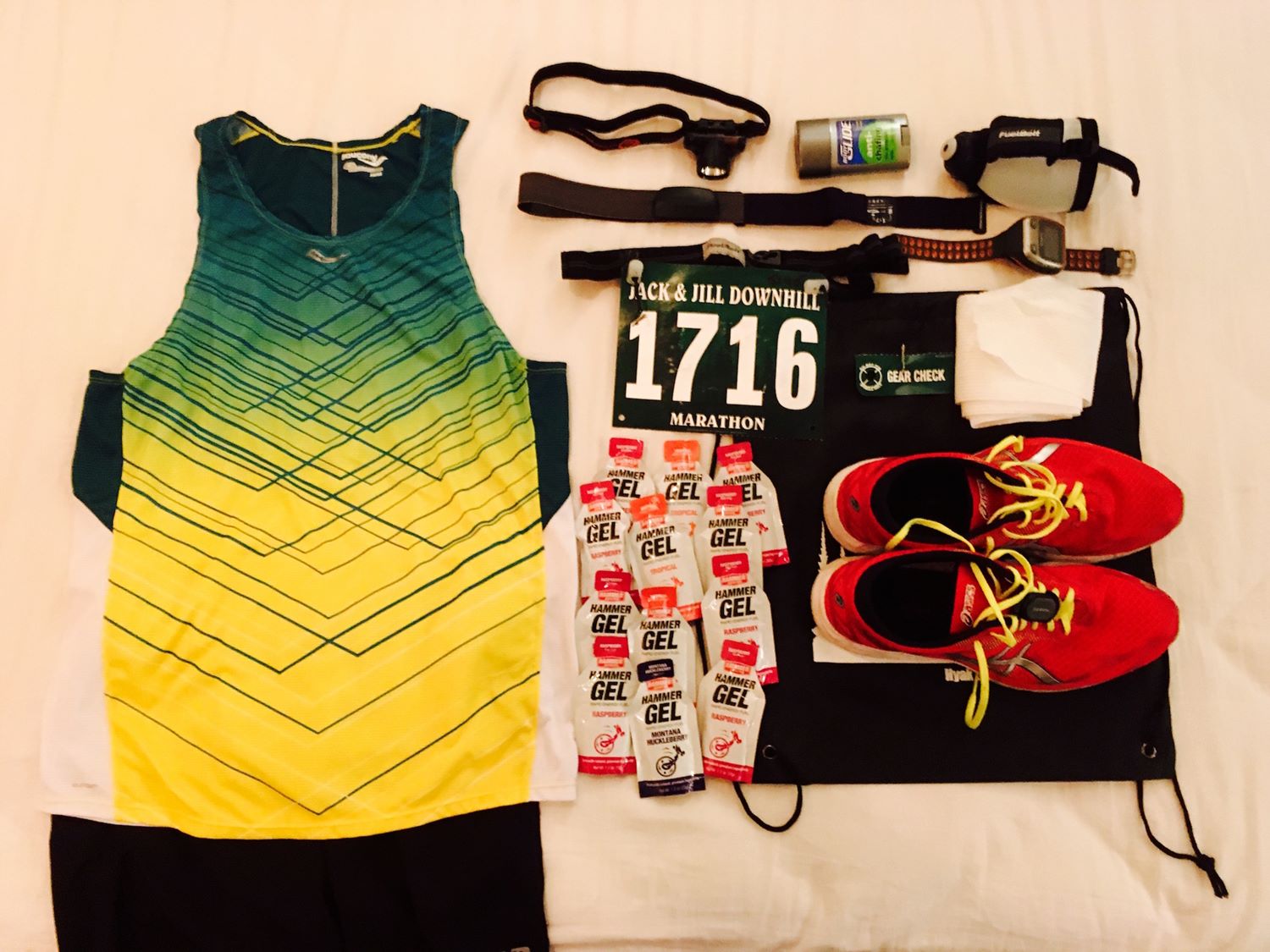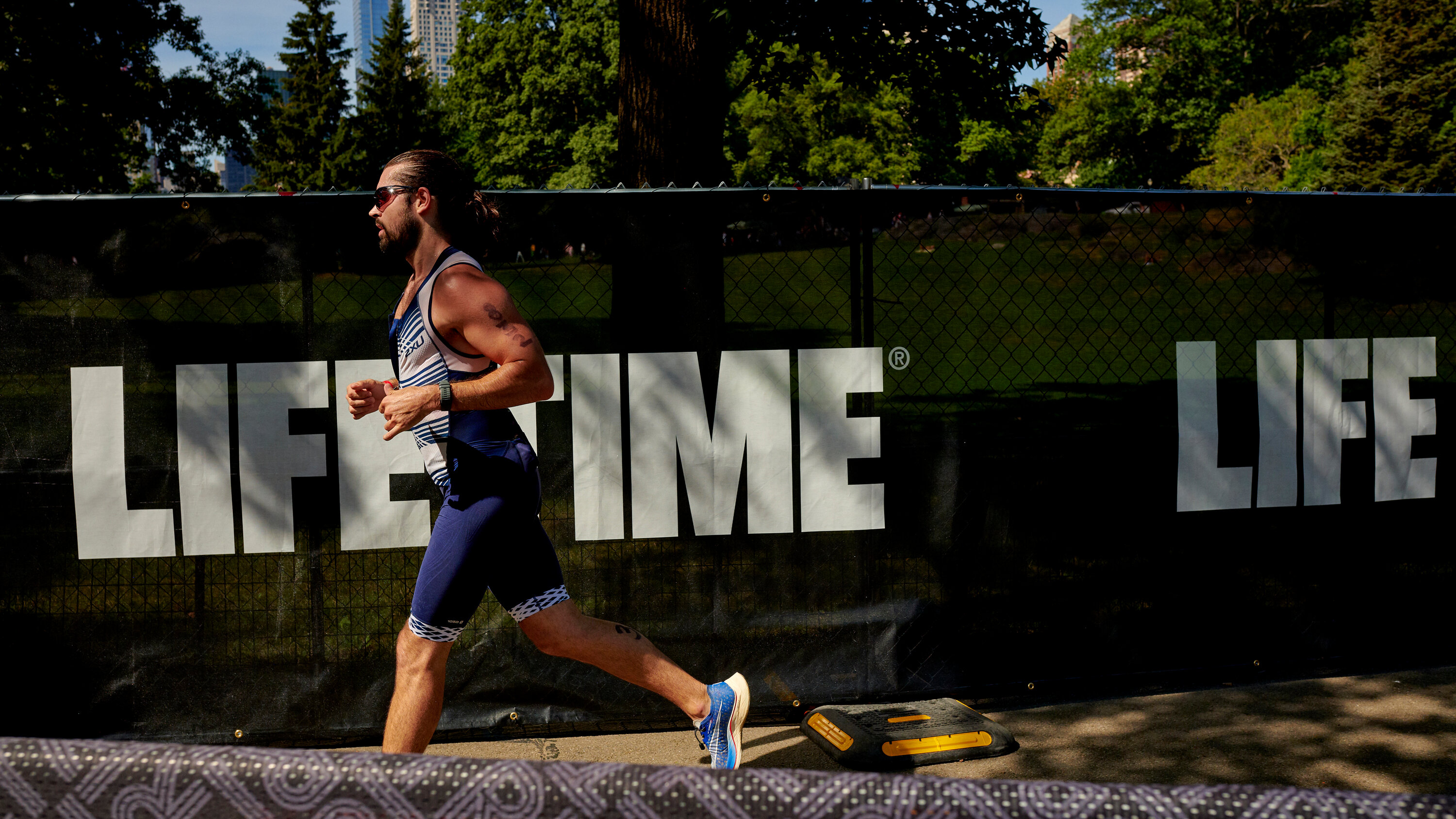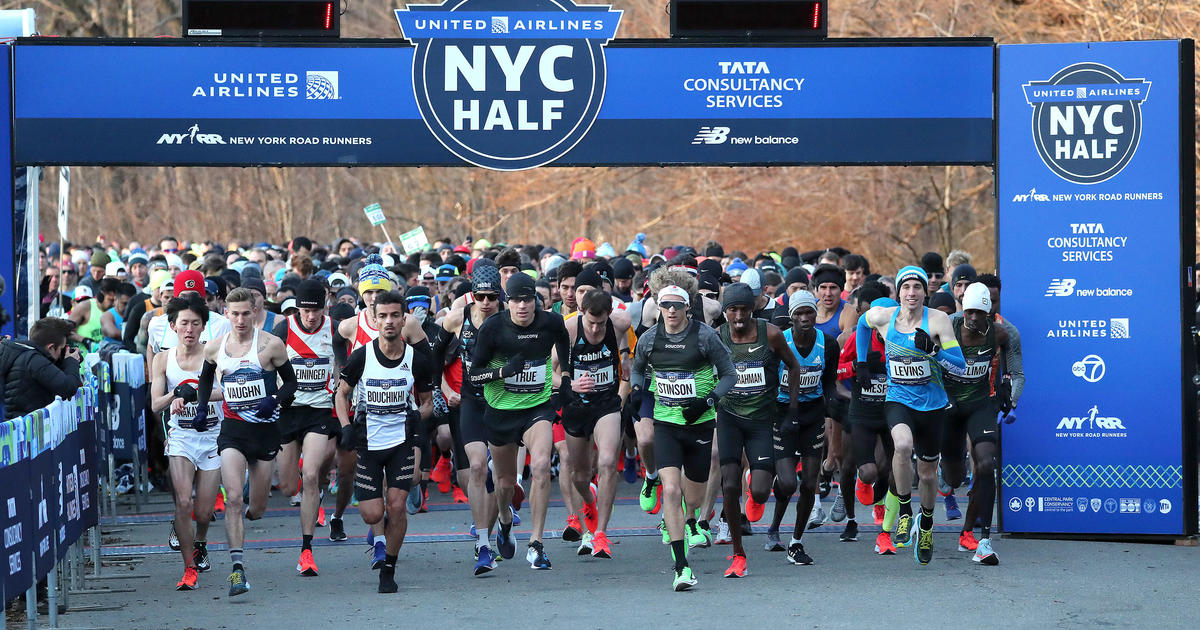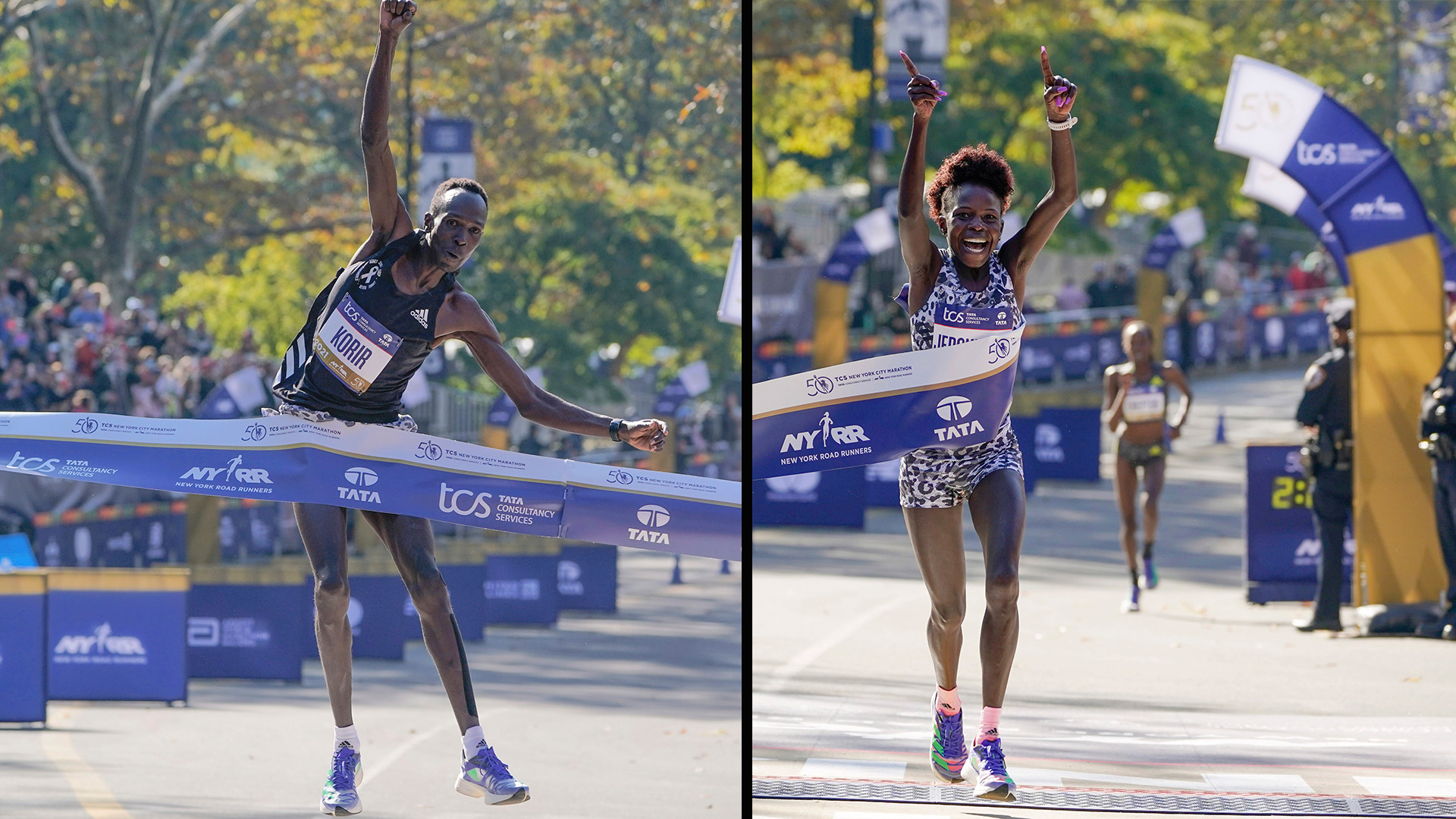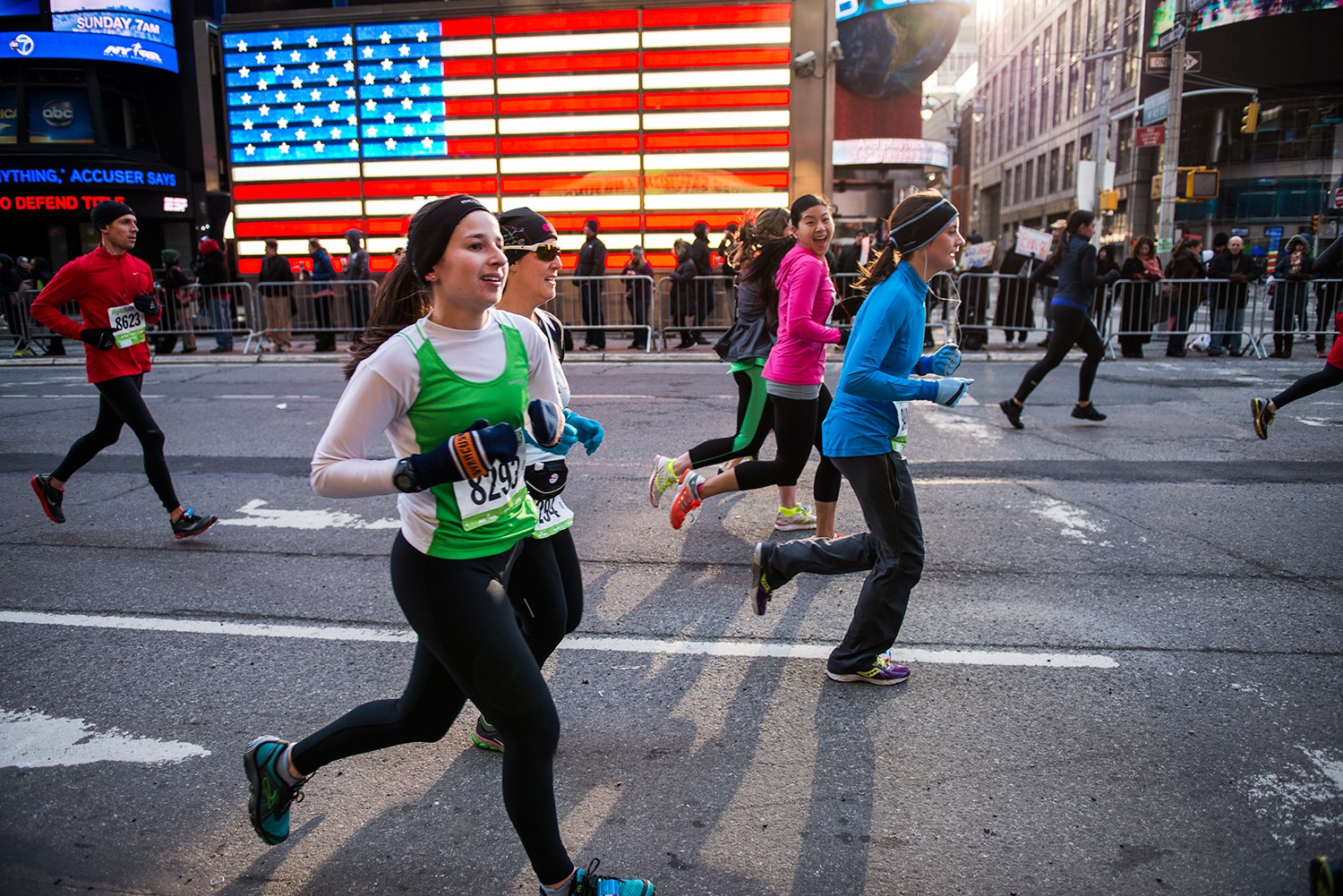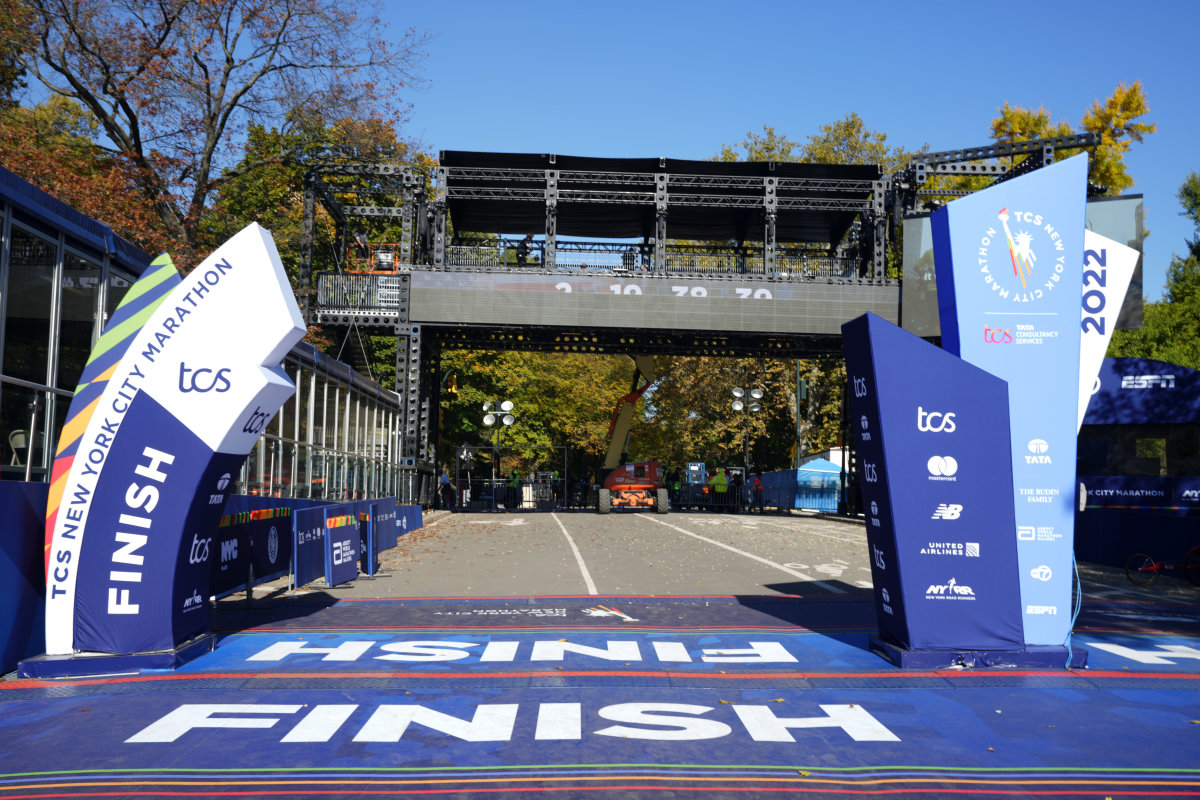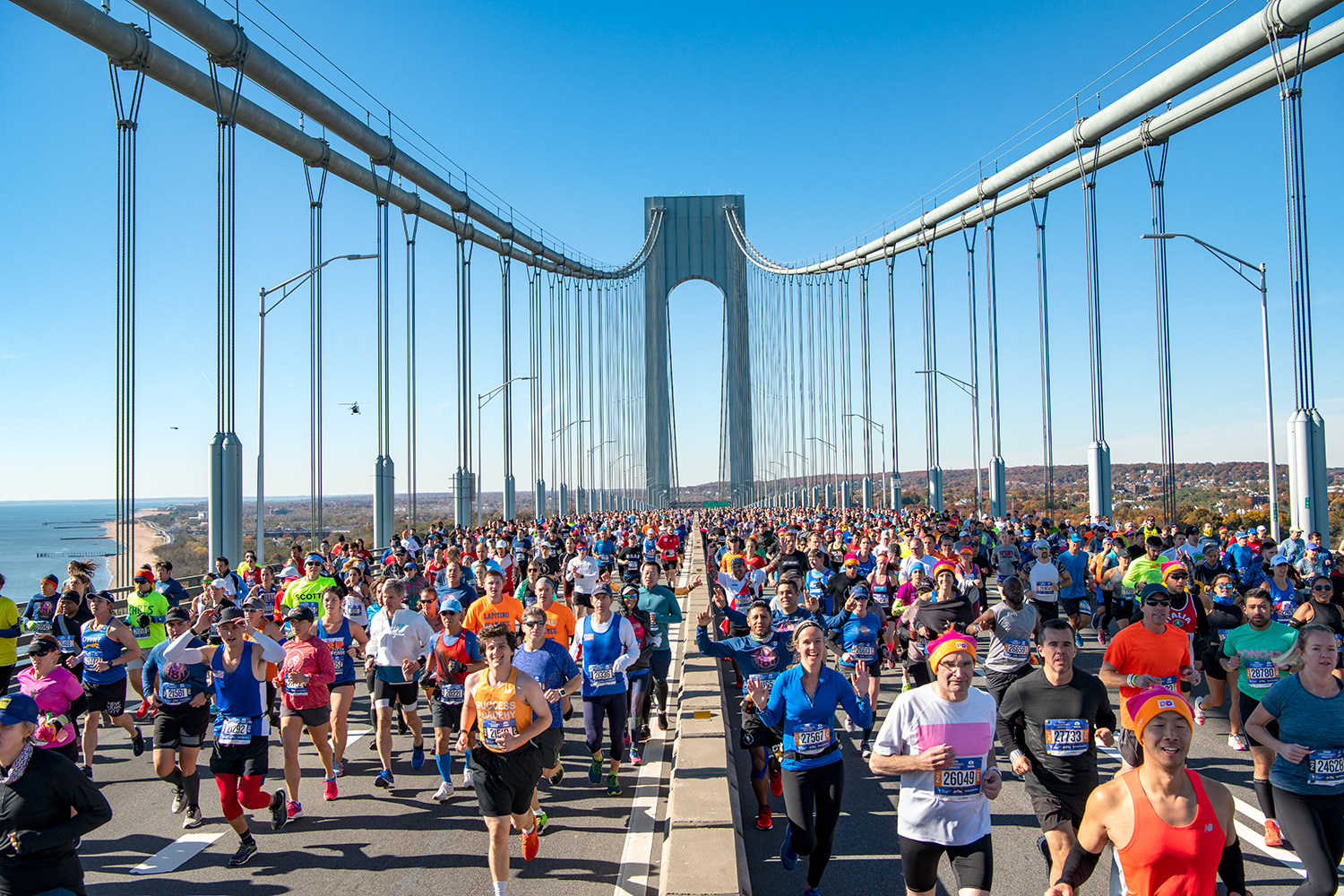

Featured
How Long Is NYC Marathon
Modified: January 2, 2024
Discover the featured NYC Marathon and learn about its impressive length. Find out how long the race spans and what it takes to complete this iconic event.
Introduction
The New York City Marathon is one of the most iconic and prestigious marathons in the world. Held annually on the first Sunday of November, the race draws thousands of participants from around the globe, all eager to challenge themselves and experience the incredible atmosphere of this legendary event. Spanning a distance of 26.2 miles, the NYC Marathon takes participants through the five boroughs of New York City, showcasing the diversity and energy of the city.
Since its inception in 1970, the NYC Marathon has grown in popularity and has become a symbol of endurance, determination, and community spirit. It is not only a race for elite athletes, but also an opportunity for everyday runners to test their limits and achieve personal goals. The event is also a major fundraising platform, with participants raising millions of dollars for various charitable causes.
The NYC Marathon is more than just a race; it’s an experience like no other. The energy and enthusiasm displayed by both the participants and the spectators create an electrifying atmosphere that propels runners forward towards the finish line. From the famous Verrazano-Narrows Bridge start to the triumphant finish in Central Park, every step of the race is filled with excitement and memorable moments.
In this article, we will take a closer look at the history of the NYC Marathon, delve into the course description, explore the registration process and participation details, provide tips for training, and answer some frequently asked questions. Whether you’re considering running the NYC Marathon or simply curious about this renowned event, this article will provide you with all the information you need to know.
History of the NYC Marathon
The NYC Marathon had humble beginnings in 1970, when 127 participants gathered in Central Park for the inaugural race. Organized by Fred Lebow and Vince Chiappetta, the event was originally called the “New York City Marathon,” later adopting the official name, “TCS New York City Marathon.” The race quickly gained popularity, attracting more participants each year.
In 1976, the NYC Marathon achieved a major milestone by becoming the first five-borough marathon. This was a significant development, as it allowed runners to experience the unique neighborhoods and cultural diversity of New York City as they traversed through all five boroughs: Staten Island, Brooklyn, Queens, the Bronx, and Manhattan.
Over the years, the NYC Marathon has witnessed numerous memorable moments and record-breaking performances. In 1983, Alberto Salazar set a new course record, completing the race in a remarkable time of 2 hours, 8 minutes, and 13 seconds. In 2009, Meb Keflezighi became the first American man to win the race since 1982, capturing the hearts of spectators and inspiring a new generation of American runners.
The NYC Marathon has also been a platform for acts of resilience and unity. In 2012, the marathon was canceled due to the devastation caused by Hurricane Sandy. Instead of holding the race, the organizers focused their efforts on supporting the recovery and relief efforts. The following year, the marathon returned, symbolizing the city’s strength and determination.
Today, the NYC Marathon is considered one of the six World Marathon Majors, along with the Boston, Chicago, Tokyo, London, and Berlin Marathons. It continues to attract elite athletes from all over the world, as well as a diverse range of participants, including charity runners, wheelchair racers, and handcycle competitors.
The NYC Marathon has evolved into more than just a race. It has become a celebration of the human spirit, an avenue for personal achievements, and a demonstration of the city’s resilience and solidarity. It is a testament to the power of running to bring people together and inspire them to push their limits.
Course Description
The course of the NYC Marathon takes runners on a thrilling journey through the vibrant neighborhoods of New York City, showcasing the city’s iconic landmarks and diverse culture. From the start on Staten Island to the finish in Central Park, each mile offers a unique and memorable experience.
The race begins in Staten Island, with runners crossing the Verrazano-Narrows Bridge, one of the most iconic landmarks in New York City. As they make their way into Brooklyn, participants are greeted by enthusiastic crowds lining the streets, providing an energizing atmosphere. The course then takes runners through the distinct neighborhoods of Williamsburg and Greenpoint, known for their vibrant arts and cultural scenes.
Continuing into Queens, participants run along the Queensboro Bridge, where they are met with a spectacular view of the Manhattan skyline. The bridge serves as a significant challenge for runners, with its incline demanding both physical and mental strength. Once in Manhattan, the course takes runners through First Avenue, where the energy of the crowd reaches its peak, creating an electrifying atmosphere that propels runners forward.
Entering the Bronx, participants experience a change of scenery and are greeted by enthusiastic spectators cheering them on. The course then leads back into Manhattan, where runners face their final challenge: the infamous Fifth Avenue. Known for its gradual incline, this stretch tests the endurance of even the most seasoned runners.
The last few miles of the race bring runners back into Central Park, where a final surge of energy is needed to reach the finish line. The iconic finish takes place near Tavern on the Green, with spectators lining the route, cheering participants on until the very end. Crossing the finish line is a moment of triumph, not only for the individual achievement but also for the sense of camaraderie and accomplishment shared by all those who have completed the NYC Marathon.
The course of the NYC Marathon is not only challenging but also incredibly scenic. From the stunning views of the city skyline to the diverse neighborhoods with their distinctive character, runners get a taste of the vibrant spirit of New York City as they conquer each mile. It is a course that inspires and motivates, pushing participants to their limits and leaving them with lasting memories of an extraordinary race.
Registration and Participation
Registration for the NYC Marathon is highly competitive and typically opens several months in advance of the race. Participants can apply for entry through various channels, including guaranteed entry, the lottery system, and charity partnerships.
Guaranteed entry options are available for runners who meet specific criteria, such as having completed a qualifying race within a certain time frame or being members of certain running clubs. These runners are guaranteed a spot in the race, provided they complete the registration process and pay the required fees.
For those who do not meet the guaranteed entry criteria, the lottery system offers a chance to secure a spot in the race. Runners can submit their names into the lottery during the designated registration period, and if selected, they will receive an invitation to register and participate in the NYC Marathon.
Charity partnerships are another avenue for entry into the marathon. Many charitable organizations are given a certain number of race entries to distribute to individuals who commit to fundraising a specific amount of money for their cause. This provides an opportunity for runners to support a meaningful cause and secure a spot in the race.
Participation in the NYC Marathon is not limited to elite runners or experienced athletes. The race welcomes runners of all abilities, from beginners to seasoned veterans. It is a celebration of personal endurance and achievement, and participants are encouraged to set their own goals and celebrate their journey.
Runners participating in the NYC Marathon can choose to run as part of an official charity team or as individuals. Being part of a charity team offers additional support and resources throughout the training and fundraising process. It also allows participants to make a meaningful impact by raising funds for a cause close to their hearts.
On race day, the NYC Marathon presents a unique and exhilarating experience for runners. The streets of New York City are filled with enthusiastic spectators, cheering and encouraging participants along the course. The sense of camaraderie among the runners and the energy of the crowd create an electrifying atmosphere that carries participants to the finish line.
Participating in the NYC Marathon is not just about crossing the finish line but also about being part of a vibrant community of runners and supporters. It is an opportunity to challenge oneself, create lasting memories, and be inspired by the spirit of New York City.
Training for the NYC Marathon
Training for the NYC Marathon requires dedication, discipline, and a well-structured plan to ensure that participants are adequately prepared for the physical and mental demands of the race. Here are some key aspects to consider when training for the marathon:
Build a Base: Before starting an official marathon training program, it’s important to have a solid running foundation. This includes comfortably running shorter distances and gradually increasing weekly mileage over several months. A base of at least 20-25 miles per week is recommended.
Follow a Training Program: There are numerous training programs available online and in books that can guide participants through the marathon preparation process. These programs typically incorporate a mix of running, cross-training, and rest days to help build endurance, improve speed, and prevent injuries.
Long Runs: Long runs are a crucial component of marathon training. These gradually increase in distance over time to help participants build endurance and teach the body to sustain effort for an extended period. It’s important to prioritize time on your feet rather than focusing solely on speed during long runs.
Speed Workouts: Incorporating speed workouts, such as interval runs, tempo runs, and hill repeats, into your training schedule can help improve running efficiency and increase overall speed. These workouts should be done in moderation and should be tailored to your current fitness level.
Strength Training: Engaging in regular strength training exercises can help prevent injuries and improve overall running performance. Focus on exercises that target the core, hips, legs, and upper body to ensure a well-rounded strength training routine.
Rest and Recovery: Rest days and recovery periods are essential for allowing the body to adapt and repair itself. Listen to your body and prioritize rest when needed to prevent overtraining and reduce the risk of injuries.
Nutrition and Hydration: Proper nutrition and hydration play a crucial role in marathon training. Fuel your body with a balanced diet that includes carbohydrates for energy, protein for muscle repair, and plenty of fruits and vegetables for essential nutrients. Stay hydrated before, during, and after runs to maintain optimal performance.
Mental Preparation: Training for a marathon not only tests physical endurance but also mental toughness. Incorporate mental training techniques, such as visualization, positive self-talk, and goal setting, into your preparation to help you stay focused and motivated throughout the race.
Remember, each runner is unique, and it’s important to listen to your body throughout the training process. Be mindful of any pains or discomfort and adjust your training accordingly. Seek guidance from a coach or experienced runners if needed to ensure a safe and successful marathon journey.
Frequently Asked Questions
1. How long is the NYC Marathon?
The NYC Marathon is a 26.2-mile race, which is the standard distance for a marathon. Participants will cover this distance as they make their way through the five boroughs of New York City.
2. What is the average time to complete the NYC Marathon?
The average time to complete the NYC Marathon varies among participants. Elite runners can finish in under 2.5 hours, while some participants may take over 6 hours to complete the race. The average time for most recreational runners is around 4 to 5 hours.
3. Are there qualifying standards or time limits for the NYC Marathon?
While there are no qualifying standards for the NYC Marathon, there is a time limit of 8 hours and 30 minutes for participants to complete the race. This allows for a comfortable pace for runners of all abilities.
4. Can I walk the NYC Marathon?
Yes, walking the NYC Marathon is allowed. In fact, many participants choose to walk the course, either due to personal preference or to raise funds for charitable causes. However, it’s advisable to maintain a brisk walking pace to ensure completion within the time limit.
5. Is the NYC Marathon open to international participants?
Absolutely! The NYC Marathon welcomes participants from all around the world. International runners have the same registration options as domestic participants and can join the race through guaranteed entry, the lottery system, or charity partnerships.
6. What is the best way to spectate and support runners during the NYC Marathon?
Spectators can line the course to cheer on their friends, family, or favorite runners. The NYC Marathon website provides detailed information on the best viewing spots, along with tips and recommendations for spectators. By joining the enthusiastic crowds along the race route, spectators can contribute to the incredible atmosphere and motivate the runners.
7. How much does it cost to participate in the NYC Marathon?
The cost of participation in the NYC Marathon varies depending on the entry method. Guaranteed entry fees range from around $350 to $450 for U.S. residents, while international participants may have slightly higher fees. Charity entries require participants to commit to raising a specific fundraising amount, which often includes the entry fee. Detailed information regarding fees can be found on the NYC Marathon website.
8. Can I wear a costume or carry a prop during the race?
Many participants choose to dress up in costumes or carry props as a fun and festive way to add to the excitement of the race. However, it’s important to ensure that costumes and props do not obstruct your or other participants’ safety during the race. Always consider the comfort and practicality of your costume or prop before deciding to incorporate it into your race day attire.
9. Are there awards for winners of the NYC Marathon?
Yes, there are awards for the top finishers of the NYC Marathon. Prize money is awarded to the top male and female overall winners, as well as the top finishers in various age categories. The prize amount varies each year, and detailed information can be found on the NYC Marathon website.
10. Can I defer my entry to a future year if I’m unable to participate?
Yes, the NYC Marathon offers the option to defer your entry to a future year if you are unable to participate due to unforeseen circumstances. However, specific eligibility requirements and deadlines apply for deferring entries, so it’s important to review the official guidelines and contact the race organizers for further assistance.
These frequently asked questions provide a basic understanding of the NYC Marathon. For more detailed information, it’s recommended to visit the official NYC Marathon website or reach out to the race organizers directly.
Conclusion
The NYC Marathon is an extraordinary event that captures the hearts and minds of runners and spectators alike. From its humble beginnings in 1970 to its current status as one of the most prestigious marathons in the world, the race has become a symbol of resilience, diversity, and the human spirit.
Throughout its history, the NYC Marathon has provided countless memorable moments and stories of triumph and inspiration. It has brought together people from all walks of life, representing different cultures, abilities, and motivations. Whether it’s the elite athletes pushing the boundaries of human performance or the everyday runners conquering personal goals, the marathon showcases the power of determination and the capacity for accomplishment.
The course of the NYC Marathon takes participants on a journey through the five boroughs of New York City, highlighting its iconic landmarks, diverse neighborhoods, and lively atmosphere. It is a race that challenges both the body and the mind, rewarding participants with a sense of achievement as they cross the finish line in Central Park.
For those considering participating in the NYC Marathon, it’s important to understand the registration process, training requirements, and the incredible support and enthusiasm offered by spectators along the route. The race welcomes participants from all around the world, offering opportunities for personal growth and creating lasting memories.
Whether you choose to run, walk, or spectate, the NYC Marathon is an event that unites a community and celebrates the indomitable spirit of human endurance. It represents the power of setting goals, pushing boundaries, and embracing challenges. The journey towards the NYC Marathon is not just about the race day itself, but also the months of training, preparation, and personal growth that lead up to it.
In conclusion, the NYC Marathon is an unforgettable experience that leaves a lasting impact on all those who participate. It is a celebration of passion, perseverance, and the shared love of running. Whether you’re a seasoned marathoner or someone considering their first race, the NYC Marathon offers an opportunity to challenge yourself, connect with a supportive community, and experience the vibrant spirit of New York City.
